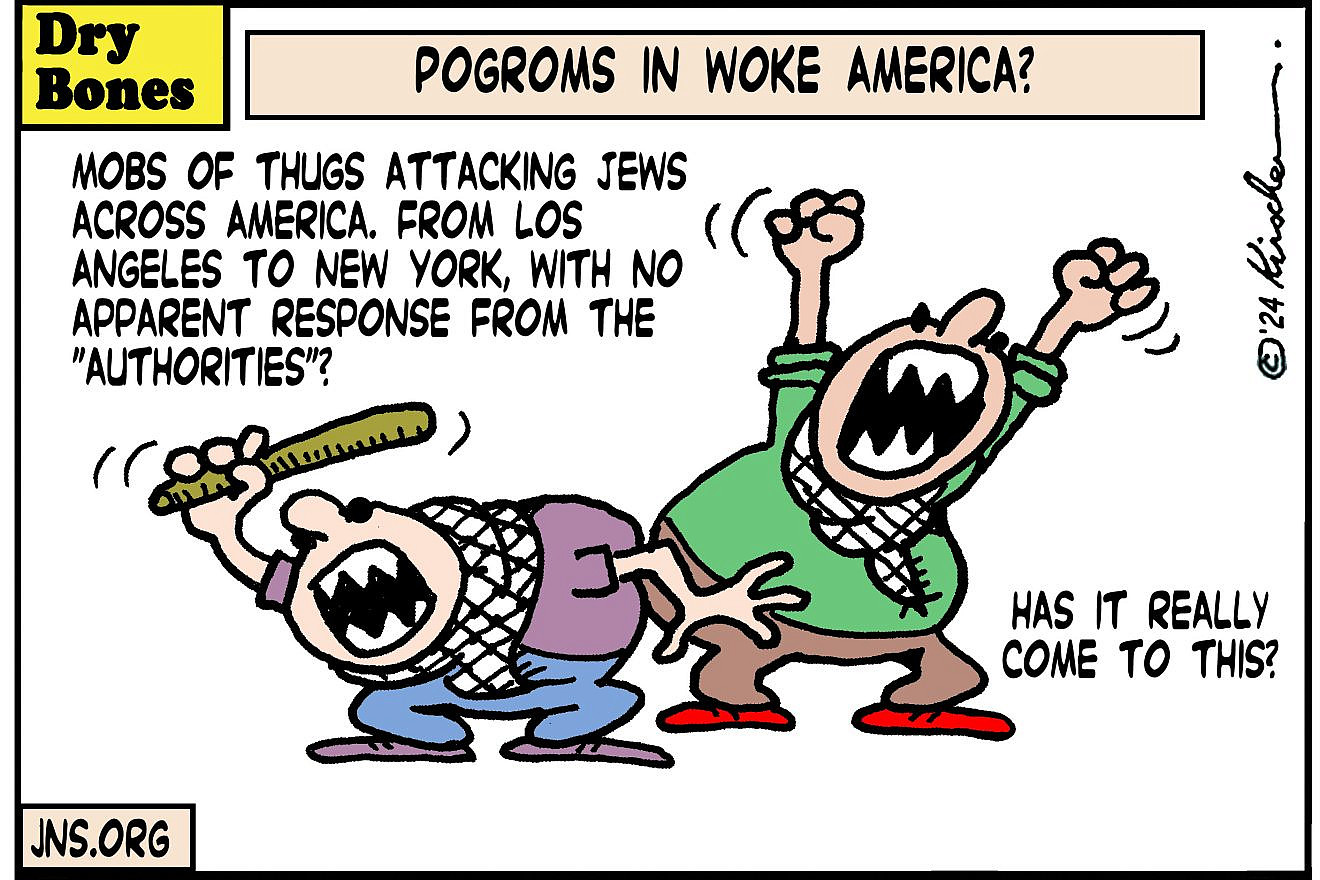‘Israel is measured by double and triple standards,’ does more than anyone to prevent civilian harm, US warfare expert says
“Israel is being measured by double and triple standards” in its fighting in Gaza, a standard “that does not exist anywhere in the world,” said John Spencer, head of Urban Warfare Studies at West Point, at a recent “War Room” briefing in collaboration with the Jerusalem Institute for Public and State Affairs (JCPA).From the Battle of Badr to Military Defeat: Changes in Hamas Perceptions of the Gaza War
Spencer, the world-renowned urban warfare who served for 25 years as an infantry soldier and did two tours in Iraq, has publicly and repeatedly defended and praised the Israel Defense Forces' performance during the Gaza War in recent months.
“The IDF uses tactics that no army has ever seen to prevent harm to civilians and still fulfill its mission,” Spencer told the JCPA after visiting the soldiers of the IDF’s 98th Division in the field.
He also stridently rejected international accusations that Israel was using starvation as a weapon, bombing indiscriminately or committing genocide.
“It’s all a lie,” Spencer declared, noting that if the standards currently applied to Israel were applied to Western countries in the future, it would make anti-terror warfare almost impossible.
Such standards include requiring the massive evacuation of a population before entering an area, not using heavy “bunker-buster” bombs to reach enemies hidden away underground, and the demand to prevent any and all civilian casualties.
“It’s impossible and unimaginable,” Spencer stressed.
“When ISIS ruled Iraq, it held the territory for about two years and built up its defenses. In the battles against the terrorist organization, the number of dead ranged from 10,000 to 40,000 people, and the numbers were reported only after a year,” Spencer said, criticizing the use of unreliable Hamas casualty numbers to determine the proportionality of Israel’s actions.
“No one posed a question to the United States then, how many civilians were killed? And no one asked ISIS that question. It’s simply impossible.”
“This imaginary standard of zero civilian casualties in a war where Israel is required to meet a new standard is very problematic,” Spencer emphasized.
He has made this point repeatedly over the past months. In an article in Newsweek in March, Spencer brought up the IDF’s operation at Al-Shifa Hospital as an example of the lengths the army goes to prevent civilian harm in Gaza.
“Israeli media reported that doctors accompanied the forces to help Palestinian patients if needed. They were also reported to be carrying food, water and medical supplies for the civilians inside,” Spencer wrote.
“None of this meant anything to Israel's critics, of course, who immediately pounced. The critics, as usual, didn't call out Hamas for using protected facilities like hospitals for its military activity.”
EXECUTIVE SUMMARY: The Hamas invasion of Israel on October 7, 2023 was quickly characterized by Hamas as fulfillment of a prophecy about the destruction of Israel. Hamas cast the invasion as a Palestinian version of the Battle of Badr, a battle in which a small force of Muslim believers under the command of the Prophet Muhammad succeeded in defeating a large force of Quraysh and Makkah who had opposed his prophecy. The battles of October 7 were labeled a divine victory by believers over the enemies of Allah, and many verses in this spirit were broadcast. However, more recent articles published on the Hamas website suggest that its view has undergone a transformation. Hamas has apparently shifted from extolling its “divine victory” on October 7 to admitting that it has been defeated in battle again and again. The great suffering Hamas has inflicted on the Gaza Strip has put it in the position where it must now explain to the Palestinian public why it started the war in the first place, why it did not expect a massive military response from Israel to its atrocities and attempt at genocide, and why the suffering of the Palestinians of the Gaza Strip is not in vain.The Obama and Biden Administrations: Paving the Way for a Nuclear-Armed Iran
To faithful Muslims, the Battle of Badr marks the victory of a small group of believers of the Prophet Muhammad over a far superior force. The battle was held in Ramadan in 624 AD between Muhammad’s group of warriors, numbering about 300 men, and an expeditionary force of Meccan men numbering about a thousand. The battle was held near the Badr Springs; hence the name.
In a preliminary battle, Hamza, Ali, and Ubaydah Ibn Harth fought three of Quraysh’s warriors. They lost, and Ubaydah suffered mortal wounds and died a martyr. At the Battle of Badr, the Muslim force was organized, determined, and acting under unified leadership. The Meccan force was larger, but fought in a decentralized manner and without a central command. Surat al-Anfal (The Spoils) in the Qur’an describes the battle. After the victory, Muhammad revealed that angels had participated alongside the Muslim army. In a famous hadith by al-Bukhari, it is claimed that the angel Gabriel himself fought on his horse against the people of Quraysh and killed many of them.
On October 7 and throughout the waiting period until the beginning of the ground operation in which the IDF forces entered Gaza, many comparisons were made between the success of Hamas on October 7 and the famous Battle of Badr. A small military force of about 3,500 men was able to overcome deployed IDF formations along the border and breach a formidable barrier consisting of an elaborate fence, multiple firearms and tanks. The photos of the bulldozer destroying the fence and of destroyed IDF tanks became images of the victory Hamas had purportedly achieved by divine inspiration.
The website of the Al-Palestinian Center for Information gives us a glimpse into changes that seem to have taken place in the view of Hamas operatives. Where they once gushed words of praise for the rare victory over Israel, they are now admitting their military failure in the confrontation with Israel.
Consider, for example, the following article published by Dr. Muhsen Saleh, a senior researcher at the Zitouna Center in Lebanon. The article, entitled Tofan Al-Aqsa – Coping with the day after the operation, was an early response to the Hamas invasion:
The Al-Aqsa Flood operation carried out by the Al-Qassam Brigades on October 7, 2023 was a qualitative historical blow to the Zionist entity. It had not had such a [defeat] since [Israel’s] establishment 75 years ago. The operation combined the elements of military surprise, an incredible security and strategic move. [The resistance] invaded a significant area of Palestine that was occupied in 1948, causing the largest number of dead, wounded and prisoners (that is, kidnapped) compared to all the battles the Palestinians have fought since the [1948] war, in which the entity [Israel] was established. This is the highest even in relation to most of the Arab-Israeli wars.
The Israeli occupation [at the time] looked confused and shocked and felt humiliated when it saw with its own eyes the shattering of [its] security theory and the collapse of the walls of physical and psychological deterrence. [The occupation] also saw with its own eyes how the men of al-Qassam broke into 20 settlement sites (towns and kibbutzim) and 11 military sites in a matter of hours. The occupation realized that it had failed to subdue the Palestinian people and crush their resistance.
To Saleh and other writers on the site, the operation began and ended on October 7 with a decisive Palestinian victory for the Hamas organization. It was a divine victory, as described by Dr. Khaled Qaddoumi (Hamas’s representative in Iran) in an article entitled: “Hamas is making history” that he published the day after the war broke out:
… we must prepare ourselves for this campaign (against Israel) with all the means at our disposal, including sanctification and strengthening the truth and justice for the Palestinian people. We must support comprehensively and in all areas the battle for liberation until the true promise is fulfilled.
America's "diplomatic efforts," instead of putting a stop to Iran's nuclear program, have only resulted in a series of concessions that have empowered the Iranian regime. The lack of stringent enforcement and verification measures, and especially lifting secondary sanctions -- by which any country that does business with Iran is prohibited from doing business with America -- have allowed Iran to accelerate its nuclear activities "under the radar."
Iran's continued development of ballistic missile technology and its persistent test firings of missiles, both in clear violation of UN resolutions, were largely overlooked. In addition, the growing bellicosity of Iran's huge militia, the Islamic Revolutionary Guard Corps (IRGC), as well as the nuclear program itself, were apparently never addressed with the seriousness they warranted -- thereby allowing Iran to expand its military capabilities and regional aggression unchecked.
The Iranian regime strategically allocated these funds to support and expand its own proxy presence throughout the region, including, among other spots, Syria, Iraq, Lebanon, Yemen, Sudan, Somalia, Mali, Burkina Faso and the Gaza Strip.
The Trump administration implemented a "maximum pressure" policy aimed at curtailing Iran's economic capabilities by particularly focusing on reducing the country's oil exports, and, most importantly, establishing "secondary sanctions" that banned any country doing business with Iran from doing business with the US.
The Biden administration's passive approach of trying to use what might look like "protection money" to try to bribe Iran into compliance has simply backfired. Iran took the billions and, unsurprisingly, appears to have fungibly used them to finance several wars in the region -- Hamas and Hezbollah's war against Israel, the Houthis' war against Israel and the US, and Iran's own April 13 missile- and drone-attack against Israel -- as well as Iran's nuclear weapons program.
The Biden administration, sadly, seems to have been the enabling factor in Iran's continued regional assertiveness and nuclear advancement. The administration's series of policies favorable to Iran significantly strengthened the regime to the point where Iran and its proxies are now actively engaged in a comprehensive war against Israel, the Sunni Arab Gulf States and, since October, more than 150 attacks on US troops in the region.






















































